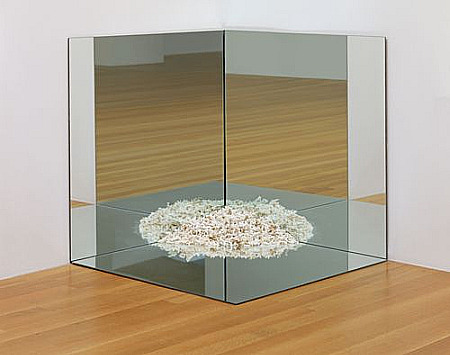
Robert Smithson: Corner Mirror with Coral, 1969. At P.S.1, the sculpture is displayed on a low platform, instead of directly on the floor as originally.
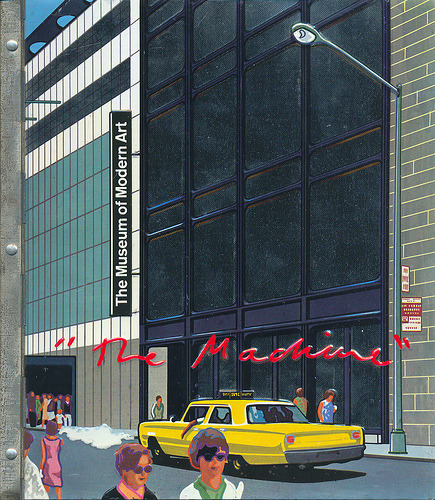
Upon the Arbitrary Nature of Posterity
A yellowed clipping from the Village Voice is included in one of the display cases in the exhibition “1969” at P.S. 1 (Queens, to April 10, 2010). It is my Village Voice report concerning the Takis Fracas at MoMA in ’69. The Greek kinetic-artist Takis, objecting to the inclusion of his work, physically removed it from the exceedingly dull exhibition “The Machine as Seen at the End of the Mechanical Age” and had a one-man sit-in in the MoMA garden. The deep question, as far as I know still not resolved in the U.S.A., is one of “moral rights.” Does an artist have any claim on an artwork after it has been sold? In Artopia, we say, yes; a thousand times, yes. But as we shall see, in 1969 one thing lead to another. And another….
“1969” (which does not include an artwork by Takis) is a fill-in exhibition in these hard times drawn from the MoMA permanent collection and archives, all works and ephemera dating from that year. If it were not for some contemporary “interventions,” this curiosity would be a waste of time, since no new or serious interpretations are offered. Much of the art is familiar.
Mel Bochner’s room, Theory of Painting (paper and paint on the floor, words on the wall) is, however, a pleasant surprise, balanced (I suppose) by the disappointing Fluxus multiples. I have to remember what used to put me off about Fluxus – George Macunias’ little Fluxus boxes. The Events and the ideas and not the multiples are what’s worth thinking about.
How I hate the once-cool term “interventions.” Now it just reminds me of the Italian euphemism for surgery.
Nevertheless, multi-media “interventions” (the term used in the press release) by The Bruce High Quality Foundation add zing, ping, and zap to this otherwise curiously forlorn array of once-powerful minimalist and conceptual artworks drained of all energy. I liked a lot of the work way back when and said so, moved on to other things, and now value the work again.
At least until last week.
It may be that these artworks were once effective because of what they were not. They were not Abstract Expressionism, they were not Pop Art, they were not Academic Realism — but became the latter, in a manner of speaking. Stranded in the unhallowed halls and former classrooms of P.S.1, they are texts without a context.
Designated “museum portals”, the BHQF grimy rock-concert speaker (The Creative Society – After Ronald Reagan), the funky BHQF refrigerator (Hell Freezes Over) and the high-use industrial vacuum (We Didn’t Start the Fire), through video and sound add the context that the Wikipedia (I kid-you-not) timeline in the hallway does not.
* * *
By the way, the BHQF collective is — according to Roberta Smith in the Times — made up of former Cooper Union students of Hans Haacke.They also recently offered a presentation as part of RoseLee Goldberg’s month-long Performa 09. The festival, supposedly focusing on performance art, includes film, dance (Anna Halprin, Debora Hay, Yvonne Rainer) and what have you, in honor of the 100th anniversary of F. T. Marinetti’s Futurist Manifesto. If you are not motivated to follow this link, here, let me offer a sample and a reminder:
We want to glorify war – the only cure for the world – militarism, patriotism, the destructive gesture of the anarchists, the beautiful ideas which kill, and contempt for woman.
I assume that one or another of the lectures or Performa panel discussions will bring up Marinetti’s friendship with and affection for Mussolini. Goldberg does not in her textbook Performance Art: From Futurism to the Present. Michael Kirby does in his 1971 Futurist Performance, but explains it away by stating that the value of art has nothing to do with the political beliefs of the artist: “Great art is not necessarily produced by heroes, nor are ‘villains’ unable to create major works.” Sounds a bit like a defense of all those Commie artists during the McCarthy period, but applied to a Fascist.
Can we be inspired by Futurism and close our eyes to Marinetti’s active support of Fascism? In France, during the Occupation, Jean Cocteau collaborated with the Nazis by, among other activities, writing a laudatory catalog essay about Hitler’s favorite Nazi sculptor, Arno Breker. Although Breker had once been Cocteau’s lover, can we look at Beauty and the Beast in the same way again?
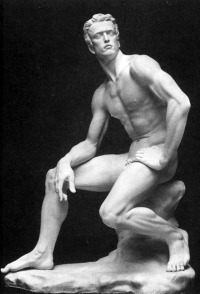
Arno Breker: Predestination, 1940-41
Can we subscribe to Martin Heidegger’s Being and Time knowing he became a member of the Nazi Party in 1933? Do we more than wince when we are reminded that our revered Henri Matisse sold paintings to Gestapo officers?
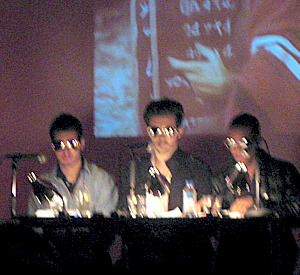 In the meantime, The BHQF presented, in the former Dia Foundation lobby, a slide lecture about sex and art patronage, down through the ages. Those in the know, know that the Dia – planning to return, its absence from Chelsea long lamented — was founded by Schlumberger (pronounced Schlum-bear-jzhay) oil-equipment heiress Phillippa de Menil and her husband the German art dealer Heiner Friedrich.
In the meantime, The BHQF presented, in the former Dia Foundation lobby, a slide lecture about sex and art patronage, down through the ages. Those in the know, know that the Dia – planning to return, its absence from Chelsea long lamented — was founded by Schlumberger (pronounced Schlum-bear-jzhay) oil-equipment heiress Phillippa de Menil and her husband the German art dealer Heiner Friedrich.
The three anonymous young men of The Bruce — wearing aviator sunglasses, and two out of three clad in leather jackets — sat at a table in front of the audience, taking turns reading items concerning the relationship between sex and art patronage, down through the ages. Slide projections above them were illustrative or sarcastic.
Just when I thought I had had quite enough, they stopped dead. Pause. The images were repeated and began melting together, and there was the thump of a dance rhythm. Without missing a beat and without getting up from their seats, they began singing a kind of Po-Mo-Town ditty. Writing in my notebook in the dark, the words I caught were: I will be your husband; I will be your wife; I will take care of you the rest of your life.

Hans Haacke: News, 1969. Not in MoMA collection; not in exhibition. See note at the end of this essay.
Back at School
The curators of “1969” do not claim their offering of mostly minimal and conceptual art is the be-all, end-all survey of late ’60s art, but the naïve might take it as such. It certainly displays what is now a rather safe taste. There’s a new game called The Curatorial Detective; you have to guess what graduate art history program any curator in question attended and what old issues of Artforum were memorized.
The artworks indeed were all made in 1969 but were not necessarily accessioned in 1969. Accession dates are not included on wall labels, but if you go to the MoMA website and click on “collections” with the knowledge that accession numbers end with the date of accession, you can find that Richard Serra’s Cutting Device was garnered (from Philip Johnson) in 1979; Smithson’s Corner Mirror with Coral in 1991; Mel Bochner’s Theory of Painting in 1997; Bruce Nauman’s Pacing Upside Down and Manipulation of a Fluorescent Tube only in 2008. And, all the Fluxus material only arrived this year. MoMA, it turns out, was not particularly prescient; in fact, it was sluggish in those ancient times when William Rubin was head of the painting and sculpture department and Bates Lowry was the director. Hopeful this exhibition is only the first step in catching up and catching up fast. MoMA in 1969 was not only rude to artists, it was asleep.
Curiously enough, Carl Andre’s lead floor-piece made in 1969 was added to the collection that year — when his name was one of three on theTakis Fracas, anti-MoMA list of demands. For the current foray into “art history”, the curators had to substitute a similar piece, borrowed from the Paula Cooper Gallery. Is MoMA’s Andre damaged? On loan? Or is this because P.S.1 is not climate controlled and lead is affected by steam heat?
The secret is out. The lack of climate control precludes the MoMA loan of certain fragile works, even to its own affiliate. Thus newcomer Stephanie Syjuco was able to offer amusing versions (“resuscitations” she calls them ) of a Joseph Beuys sled and a Robert Morris anti-form, felt wall-hanging, the originals too fragile or fugitive to face the unfiltered, humid air in Queens. Back in Alanna Heiss days, when I curated “Pattern Painting” for P.S.1, we didn’t give a thought to climate control. Of course, there was nothing in my exhibition made of felt. Or fat.
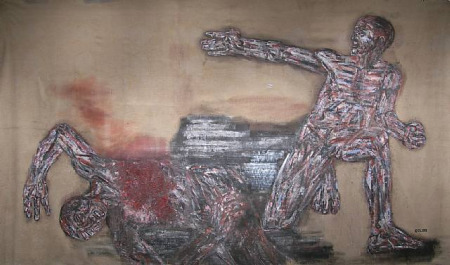
Leon Golub: Napalm I, 1969. Not in MoMA Collection; not in exhibition.
Mysteries of “1969”
A video played on a monitor placed directly on the floor of one of the main rooms will stop you in your tracks. In contrast to Andy Warhol’s Blue Movie, in a room to itself with a sign warning that it might not be suitable for children, East/West has no warning that it might not be suitable for adults. It is a 20 minute conversation between Robert Smithson and his wife Nancy Holt.
The interrogation by Holt could cause you to conclude she was the most irritating woman alive and Smithson a cowboy poseur, which I can testify he was not. In fact he was rather serious and certainly intelligent. Were these two satirizing Warhol’s movies?
Along with the inclusion of this unfortunate tape, there are other mysteries.
It is very mysterious to me why a Helen Frankenthaler painting is included. In the present company it looks like a cloud of expensive perfume. It does not even provide adequate contrast to the severity that is otherwise here in such abundance but serves to remind this viewer that Frankenthaler – daughter of a Supreme Court judge, wife of Robert Motherwell, and darling of Clement Greenberg — was one of the N.E.A. committee members dead set against grants for individual artists, which were then forbidden.
Puzzling in a lesser way is the inclusion of four West Coast pseudo-minimalist artworks by Larry Bell, Ron Davis, Robert Irwin, Craig Kauffman, and John McCracken. Pretty is good, but not here.
But the biggest mystery of all is why 1969 is the year of choice, rather than 1968 or 1970……..So below you will find my 1969, an indication of what I was writing about in my art columns for the Village Voice in that year
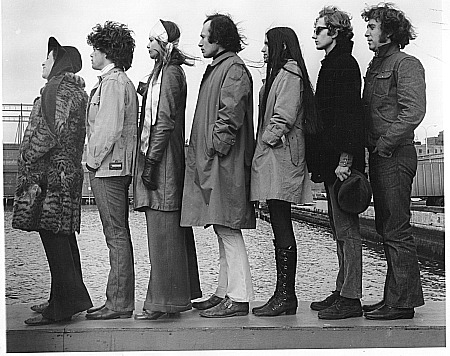 :
:
Hannah Weiner, Scott Burton, Anne Waldman, Vito Acconi, Berndette Mayer, Eduardo Costa, John Perreault Theater Works, Hunter College, 1969. Not in MoMA collection; not in exhibition. John Perreault Archive
Walking Backwards Into The Future
When I first heard of the “1969” show, I wondered if it would include attacks on MoMA made during those heavy-duty times. Past mistakes and stupidities are part of history, right?
There are Art Workers Coalition materials, and, yes, my Voice column about the Takis Fracas is on display. Housed in one of the several library cases, it is suitably difficult to read.
Curious, I later searched out my file of Xeroxes (!) of old Voice pages to see what I had written. Kind of jazzy, and, of course, on the right side–the artist’s side. This lead me to look at all the 1969 columns.
Guess what? For the would-be time-traveler or the art historian or for any interested party these pages offer a better picture of art in 1969 than the exhibition at P.S.1./MoMA.
In this regard, I remember at the time being introduced to an extremely pretentious and inordinately pompous art critic (no, not Rosalind Krauss) when said writer returned from Paris “for the first time since the war,” said my sarcastic friend, “the first World War.”
Her first and only question to me was: “Well, Jean Perreau” (calling me by my father’s first name and giving my last name the French pronunciation, “How does it feel to be the most read art critic in New York?”
I corrected her. I said that Hilton Kramer in the Times was the most read art critic in New York, but I was the most trusted and the most influential.
She simply could not understand this, and thereafter I was ignored.
How I Became Famous

John Perreault: Alphabetical T-Shirts, “Street Works IV”, Architectural League, 1969. Not in MoMA collection; not in exhibition. John Perreault Archive.
The Village Voice, January 9, 1969: Whose Art?
Report of the Takis ‘action’ at MoMA. Dissatisfied with the selection and placement of his sculpture (owned by MoMA) in the “Machine Art” exhibition, Greek artist Takis, after receiving no response from the curator or the director, physically removed his piece from the exhibition and sat down with it in the Museum garden in protest……[ I did not report that Hans Haacke was also put off by the treatment of his condensation piece in the MoMA exhibition. His request that the museum leave his artwork plugged in overnight, was ignored. Consequently, the element that was supposed to build up ice never did so. Or rather, what ice had built up from the steam during the day, melted at night. He also had no response from curators, staff, or even the director of the museum.]
The Takis action raised the issue of artists’ rights in regard to sold artworks –as far as I know, not yet resolved — and started a series of artists meetings that lead to more general demands: minority representation, a free day at MoMA, etc. And then the founding of the Art Workers Coalition, itself leading to the Art Moratorium in May 1970.
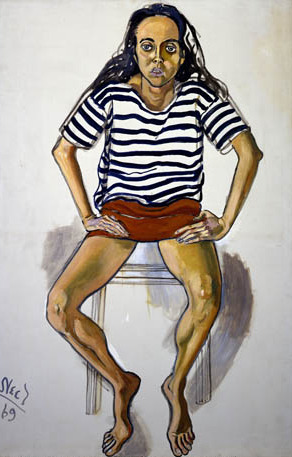
Alice Neel, Ginny in Striped Shirt, 1969. Not in MoMA collection, not in exhibition.
The Village Voice, February 20, 1969: Lies that Are True.
New paintings by Alan D’Arcangelo.
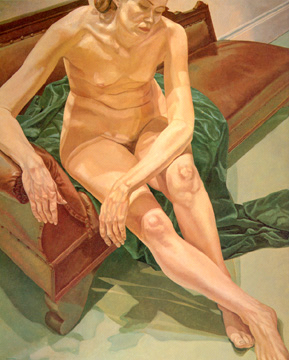
Philip Pearlstein: Nude on Couch, 1969. Not in MoMA collection; not in exhibition.
The Village Voice, February 27, 1968: Earth Show
Detailed report of junket to opening of “Earth Art” at Cornell University. On the plane: Hans Haacke, Les Levine, Neil Jenney, gallerists John Gibson and John Weber, Willoughby Sharp (curator of the exhibition), Lucy Lippard, Dore Ashton (Arts Magazine), John Margolies (Architectural League), Dan Graham, David Bourdon (Life), Max Kozloff (The Nation), Howard Junker (Time) And, of course, yours truly (Village Voice, Paris Match). Praise and description of works by Richard Long, David Medella, Michael Heizer, Robert Morris, Gunther Uecker, Robert Smithson, Hans Haacke, Neil Jenney, Dennis Oppenheim, Jan Dibbits.
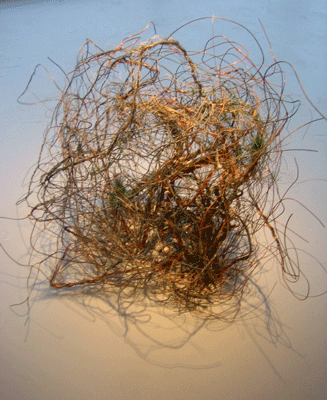
Alan Saret, Untitled, 1969. Not in MoMA collection; not in exhibition.
The Village Voice, March 6, 1969: Outside the Museum
Richard Long at John Gibson; Malcolm Morley at Kornblee; Hairy Who at SVA..
MoMA’s response to artists’ demands: a committee on artists relations to receive complaints and make recommendations. Rejected. Takis supporters increase to 30.
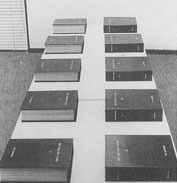
On Kawara: One Million Years, 1969. Not in MoMA Collection; not in exhibition.
The Village Voice, March 13, 1969: Off The Wall
Seth Siegelaub’s One Month (publication-as-exhibition): Joseph Barry, James Lee Byars, Douglas Heuber, Dennis Oppenheim, etc. Also: Robert Morris at Castelli Warehouse—Continuous Project Altered Daily.
The Village Voice, April 3, 1969: Back Indoors.
Barnett Newman’s first exhibition in 12 years. Charles Sheeler. Nancy Graves. Paul Thek’s Fishman.
The Village Voice, April 19, 1969: MoMA and the Workers
“The Museum of Modern Art seems to have been playing a waiting game….”
Art Worker’s Coalition formed…..”The initial negotiations and confrontations were handled very badly, so much so that I that I felt it necessary to withdraw my de Kooning lecture as a protest….” Two anti-MoMA demonstrations….Director Bates Lowry to the New York Times: the public hearing and free admissions “were absolutely impossible and can’t be considered”….Art Workers Coalition has an open hearing at the School of Visual Arts. Lowry, after less than a year as director, resigned in May 1969.
Philip Pearlstein at Frumkin…”perhaps the most radical of all the new representational painters.” …..Robert Huot at Paula Cooper…installation and luminactive tape; Richard Long at Bowling Green.
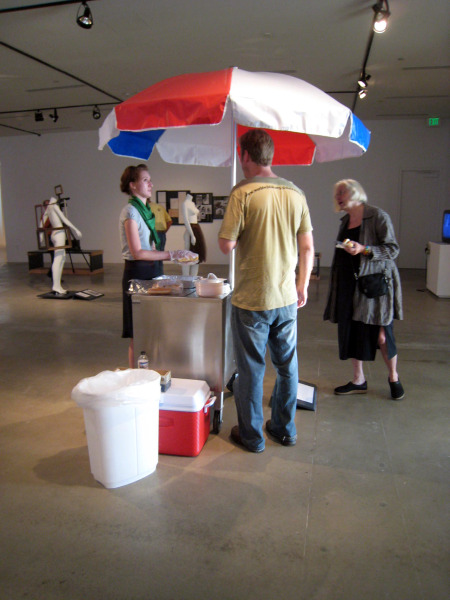
Hannah Weiner: Weiner’s Wieners, 1969. Street Works IV. Recreated in 2008 for “In Plain Sight: Street Works and Performances 1968 -1971,” The Laboratory for Art and Ideas, Belmar, Colorado. Courtesy: John Perreault Archive.
The Village Voice, May 1, 1969: Free Art
Street Works I. Initial group (Hannah Weiner, Marjorie Strider, and John Perreault) expanded to include: Vito Acconci, Eduardo Costa, Bernadette Mayer. Twenty artists actualized streetworks on March 15. Founders, plus Scott Burton, Arakawa, John Giorno, James Lee Byars, Bernar Venet, Gregory Battcock etc. [Three Streetworks announcements are included in the “1969” exhibition ]
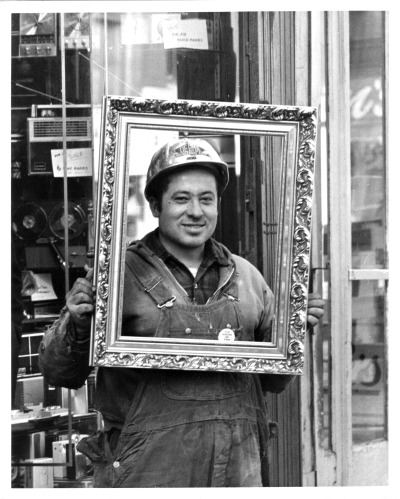
Marjorie Strider: Street Work, 1969. Not in MoMa collection; not in exhibition.
The Village Voice, May 8, 1969: Visual Pleasure
Nicholas Krushenick paintings. David Hockney. Robert Ryman.
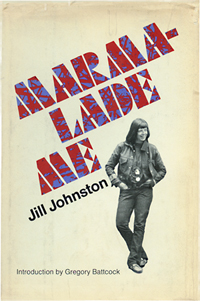
The Village Voice, May 29, 1969: A Sort of Sacrifice.
“The Disintegration of a Critic: An Analysis of Jill Johnston,” a panel discussion at N.Y.U. David Bourdon (moderator), Charlotte Moorman, Gregory Battcock, Ultra Violet, Bridget Polk, Walter Gutman, John de Menil, Lil Picard and Andy Warhol. With an appearance of Ms Johnston in rage mode protesting how her Village Voice column had been cut and then reading the very long discarded section, finally to much applause…Also: Discussion of Anti-Illusion: Procedures Materials at the Whitney. Description of and praise for works by: Richard Serra (lead splash piece), Carl Andre, Bruce Nauman, Neil Jenny but “he should have eliminated those hideous acrylic paintings and just shown the bowls of dog food.”), Robert Morris, Bill Bollinger, Eva Hesse, Rafael Ferrer, Michael Snow…

John Perreault: Hair Veil (fromFashion Show Poetry Event),1969. Center for Inter-American Relations. Artist and model (Anne Waleman). Not in MoMA collection; not in exhibition.
John Perreault Archive.
The Village Voice, May 22, 1969: Invisible Dancers
Spring Gallery ’69 @ Paula Cooper Gallery. Performances by Marjorie Strider by Tom Gormly, Hannah Weiner plus a dance piece by Deborah Hay [“Performances” first used by Pop artist Strider, who had been in some Oldenburg Happenings and had been married to Michael Kirby, author of the first book on Happenings}…….Mentions of shows by Lowell Nesbitt at the Stable Gallery; Jasper Johns and Robert Rauschenberg at Castelli, Jack Kruger’s 100 piece sculpture at Castelli Warehouse, a show of erotic drawings called “Censored” at Cannabis. Also Aesthetic Realists Chaim and Dorothy Koppelman: “Their petition to gain a review from the Times quotes Hilton Kramer as saying he’d ‘puke’ if he got another telephone call from them. I know what he means.” Also: “my apologies to Abraham Lubelski: I erroneously reported that his patch of grass in Street Works II was fake. It was real grass.”

Chck Close: Frank, 1969. Not in MoMA collection; not in exhibition.
The Village Voice, June 5, 1969: Para-Visual
“Language III” at Dwan Gallery. Lucy Lippard’s Art Workers Coalition Benefit at Paula Cooper. Hans Haacke, Bernar Venet, Richard Artswager (Blips), Carl Andre, Lawrence Weiner, Sol LeWitt, Bill Bollinger, Robert Smithson, Mel Bochner, Michael Kirby, Joseph Kosuth, Adrian Piper, On Kawara, Robert Morris, Bruce Nauman. Kosuth’s instruction piece was to go to the Dwan show and separate the art from the poetry…..Street Works III: Soho at Night: 500 participants…. “New Works” by Acconci, Arakawa, Perreault, and Venet.
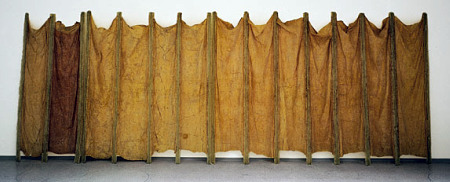
Eva Hesse: Expanded Expansion, 1969. Not in MoMA collection; not in exhibition.
The Village Voice, April 24, 1969: I Never Saw a Purple Plane
Trip to Ohio: “Before my departure from Ohio, I remember sitting in the Zane Gray Room of the Zanesville Ohio Holiday Inn near the Zane Line, eating my Zanesville Steak, joyfully contemplating my return to New York and the resumption of my quest for the perfect painting on velvet (preferably of a kitten), the perfect clown portrait, the most voluptuous Abstract Expressionist smudge or splatter, the tackiest vanity gallery, and the rudest and/or pushiest artist.”
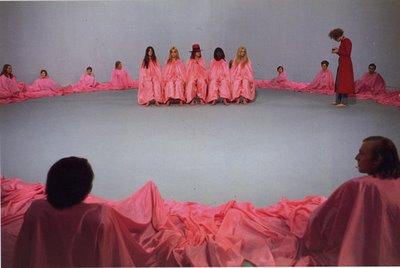
James Lee Byars: The World Question Center, 1969. Not in MoMA collection; not in exhibition.
The Village Voice, October 2, 1969: Other Things and Lichtenstein
Roy Lichtenstein; Iowa City teaching gig; Smithson “Urination Piece.”
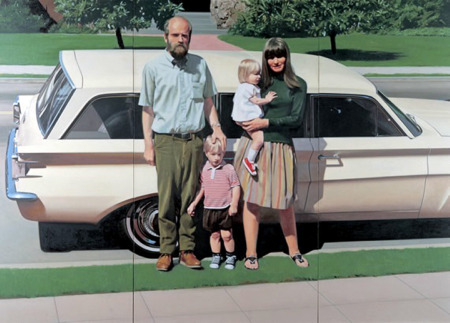
Robert Bechtle: 1961 Pontiac, 1969. Not in MoMA collection. Not in exhibition.
The Village Voice, October 9, 1969: Looking For Art
“…although I did manage to see a few interesting things in the galleries, the things that really stick in my mind are Godard’s Le Gai Savoir at the Film Festival–it was more visually stimulating and ‘plastic’ than most of the gunk I see in the galleries….Wednesday I trekked up to Charlotte Moorman’s [avant-garde] festival, but didn’t see very much. Missed Lil Picard wrapping people up in bedsheets…..
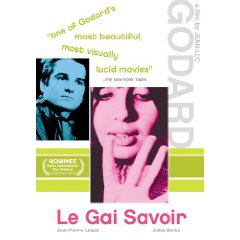
The Village Voice, October 16, 1969: Taking to the Streets.
“Street Works IV,” sponsored by the Architectural League: Vito Acconci, Arakawa and Madeline Gins, Scott Burton, Eduardo Costa, John Giorno, Stephen Kaltenbach, Les Levine, Abraham Lubelski, Bernadette Mayer, John Perreault, Marjorie Strider, Hannah Weiner.
The Village Voice, October 23, 1969: The Monet of Minimalism
Sol LeWitt wall drawings.
The Village Voice, November 6, 1969: Treasure Hunt
Art junket to Andy Warhol’s “Raid the Ice Box” exhibition in Houston. Details of shenanigans in the de Menil private jet: “We even took turns reading aloud Annette Michelson’s review of John Russell and Suzi Gablik’s Pop Art Redefined. ….Miss [sic] Michaelson’s piece, which appeared in the New York Times Book Review, was not exactly easy going and was full of affectations, quirks, and oblique references.”
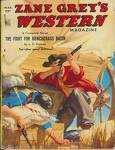
The Village Voice, November 20, 1969: Systems.
Hans Haacke at Howard Wise; Deborah Remington at Bykert; Mon Levinson at Kornblee; Les Levine’s “Your Worst Work” at the Architectural League; Peter Hutchinson and Dennis Oppenheim at MoMA; Jean Dubuffet at Pace; Lucy Lippard’s “Groups” at SVA Gallery; Gary Kuehn at Fischbach; Peter Saul at Frumkin.

Keith Sonnier: BA-OH-BA, 1969. Not in MoMA collection. Not in exhibition.
The Village Voice, December 4, 1969: Plastic Very Present
“Plastic Presence” at the Jewish Museum. Pan, but praise for Eva Hesse and Frank Lincoln Viner, and Richard Van Buren……Burgeoning of Soho galleries….Meeting with Lygia Clark during her first visit from Brazil: “…now almost totally concerned with touch…For one work, I had to blow up a plastic baggie. She then closed it with a rubber band and placed the bag inflated with my own breath, in my hands, dropping a smooth onto the top of it. The stone, which could be made to move by manipulating the plastic bag as I squeezed it, seemed to be floating within the clear plastic bag. I was holding my breath and my breath was holding up a stone….”

Lygia Clark: Untitled (participation piece), 1969. Not in MoMA collection. Not in exhibitiom.
The Village Voice, December 18, 1969: Get The Picture?
Discussion of photography and art. “Painting from the Photo” at the Riverside Museum. Artists discussed: Richard Estes, Malcolm Morley, Joseph Raffael, Harold Bruder, Audrey Flack, Howard Kanovitz. [Louis Meisel had not yet invented the term Photo-Realism.]
Also: “I have been receiving the Wall Street Journal every morning courtesy of Bernar Venet. Stock market figures and weather reports have been Venet’s special thing for awhile now, so I guess this is a work of art…..”
Penultimately: “At the ICA panel discussion in Philadelphia called “What Happened to the ’60s?” Les Levine took James Lee Byars’ edible paper man that we were supposed to [give] to the audience to eat and dissolved it in a pitcher of water. Jill Johnston read from her memoirs [about being a lesbian dance critic and the illegitimate daughter of the poet Apollinaire], Warhol sent critics Gregory Battcock and David Bourdon to Paris for a Thanksgiving dinner.”….
Finally: “In a recent program at the Emanu-el Midtown Y, Vito Acconci sat in front of the audience and stared at each person for 13 seconds. He then climbed up and down off a box for one half hour, repeating this three times in his apartment, with the end result, as expected, that he cold not walk at all the next day.”
Note: Most of the images I have used, as indicated, are of artworks not in the MoMA collection and not in the exhibition. This is to illustrate (1.) the near-absurdity of the theme; (2.) the possibilities of other samples from 1969, particularly outside the MoMA collection; (3.) to give a richer picture of that year which was no less chaotic and no less aesthetically diverse than any other year; (4.) and, more personally, to indicate my Village Voice columns were hardly every illustrated with art mentioned in the text; the photographer chose the pictures, for whatever purpose.
Also, I first tried formulating an alternative exhibition by going to the online version of the MoMA collection on their website, learning that, given the material, the curators probably did the best they could. My “Googled 1969” had other problems. You have to know in advance what artists you are looking for and most images, alas, do not include dates or titles. Many artists have simply disappeared or only exist outside of cyberspace, perhaps because they have sold every piece they ever made and did not retain reproduction rights or fear appropriation for commercial purposes.You should be so lucky. Artists, get over it. The virtual museum is already here. As they used to say in 1969, go with the flow,
FOR AN AUTOMATIC ARTOPIA ALERT: perreault@aol.com
